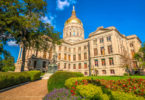As the state capital of California, Sacramento is also the county seat of Sacramento County. With a population of just over a half-million, it is the sixth largest city in California, as well as the ninth largest state capital in the country. It is also the fastest-growing city in California, with a huge cultural and economic influence on the metropolitan area, and is also a major hub of education, being the home of both the University of California at Davis and Sacramento State University.
With attractions like the California Museum, the California Hall of Fame, the Crocker Art Museum, the Old Sacramento State Historic Park, and the California State Capital Museum, Sacramento is a big draw for tourists. It is also a center for the so-called “hipster” movement, being called the most “hipster” city in California. In addition, the Harvard University Civil Rights Project dubbed Sacramento as America’s Most Diverse City in 2002.
The city has a long history, going back thousands of years with human habitation. The Nisenan Native American people lived in the area for probably thousands of years before European explorers first arrived there. The Plains Miwok people also called Sacramento home. These were hunter-gatherer people who only left the barest archaeological trace of their existence, subsisting on what food they could find in the area, rather than cultivating it. However, unlike other hunter-gatherer tribes, who were nomadic, these tribes were fairly settled, having learned to store bulbs and root vegetables during the winter. This allowed them to have villages, so today’s scientists do know they were there.
Europeans are first known to have come to the area in 1808 when a Spanish explorer named Gabriel Moraga came to the area and named it. A member of Moraga’s expedition wrote a description of Sacramento at the time they came to it:
“Canopies of oaks and cottonwoods, many festooned with grapevines, overhung both sides of the blue current. Birds chattered in the trees and big fish darted through the pellucid depths. The air was like champagne, and (the Spaniards) drank deep of it, drank in the beauty around them. “¡Es como el sagrado sacramento! (It’s like the Blessed Sacrament.)” The valley and the river were then christened after the “Most Holy Sacrament of the Body and Blood of Christ.”
The first American to come to Sacramento came in 1839, arriving at the juncture of the American and Sacramento Rivers with a land grant from Mexico for fifty thousand acres in hand. The following year, he and his friends built and established Sutter’s Fort, which was a huge building made of adobe with eighteen-foot high walls that were three feet thick. The fort was virtually impenetrable.
Sutter officially represented Mexico when he went there, rather than America, and he called his settlement New Helvetia, which was a name inspired by a place in Switzerland. He was the only political authority in the area at the time and the sole dispenser of justice. Eventually, though, new settlers came as the American frontier opened and settlers came west. By the time the area began to open up to new settlers, Sutter owned an orchard of ten acres and had thirteen thousand cattle, making him a huge financial success. His Fort Sutter was a common stop for those who were migrating west. Sutter went on to start the agriculture industry in Sacramento in 1847 when he brought in two thousand fruit trees. The same year he brought in the trees, he also built a sawmill, looking to increase his economic empire.
Gold was discovered near Sutter’s mill in 1848, about fifty miles north of the fort. At this discovery, the Gold Rush was on and large numbers of fortune hunters came to Sacramento, significantly boosting the population, making the village a healthy town. The same year gold was discovered, Sutter’s son, John Sutter, Jr., came to town. The son wanted to help his father resolve the debt he had acquired in building his agricultural empire. The arrival of the gold seekers did not help Sutter’s situation, as they happily squatted on un-watched portions of his land, and made off with his property if they could manage it. The Gold Rush was not a good thing for Sutter.
To accommodate the new settlers, Sutter’s son began laying out the City of Sacramento the same year he arrived, doing so with his business partner, Sam Brannan. The senior Sutter was against this but was in no financial position to object. The new city was two miles south of the elder Sutter’s settlement of New Helvetia. The new city included twenty-six lettered and thirty-one numbered streets. The city was an overnight huge commercial success, while the senior Sutter’s fort, mill, and town of Sutterville all failed. This caused some bitterness between father and son.

Contemporaneous illustration of Sutter’s Fort in the 1840s. (Wikipedia)
The City of Sacramento adopted a charter the year after Sutter, Jr. laid out the plan for it, and the year after that, the state of California recognized it as an official city. This makes Sacramento the oldest incorporated city in the state. Despite floods, fires, and an epidemic of cholera in its early years, Sacramento’s close proximity to the Mother Lode in the Sierra Nevada mountains allowed it to continue to grow and prosper, and it soon attained a population of more than ten thousand.
The legislature of California moved to Sacramento in 1854 (the previous capital had been in Monterey). When the state’s first Constitutional Convention was held five years previously, the capital was elected to be San Jose, and that is where California officially became a state. The capital then moved to Vallejo and Benicia, before finally settling on Sacramento. It was named as the permanent state capital in 1879 and has been so ever since.
Today, Sacramento offers something for everyone, which is what makes it such a popular tourist destination. With a rich history and vibrant contemporary culture, Sacramento is the place to be in California.






